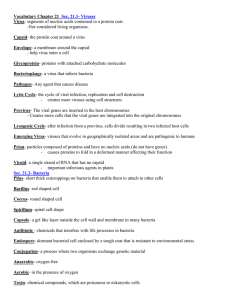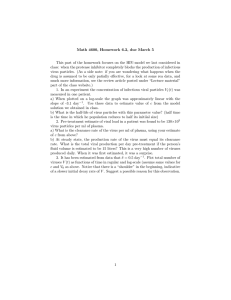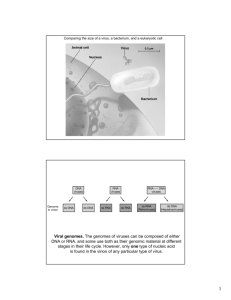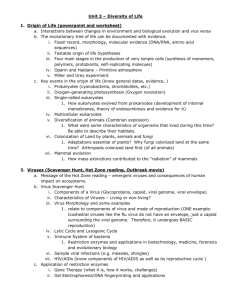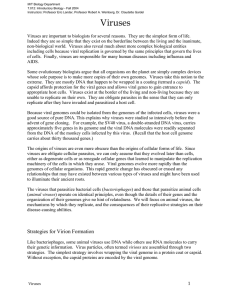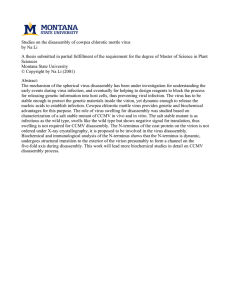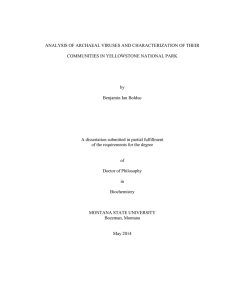Terms & Definitions in Virology Capsid: Capsomeres: Defective virus:
advertisement
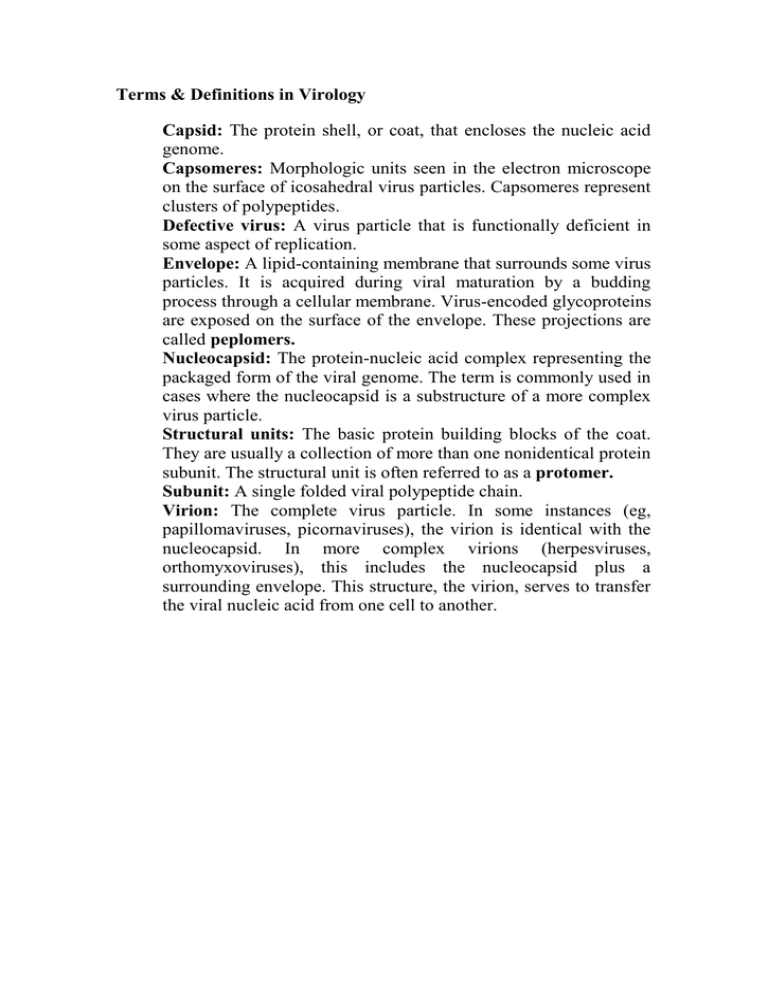
Terms & Definitions in Virology Capsid: The protein shell, or coat, that encloses the nucleic acid genome. Capsomeres: Morphologic units seen in the electron microscope on the surface of icosahedral virus particles. Capsomeres represent clusters of polypeptides. Defective virus: A virus particle that is functionally deficient in some aspect of replication. Envelope: A lipid-containing membrane that surrounds some virus particles. It is acquired during viral maturation by a budding process through a cellular membrane. Virus-encoded glycoproteins are exposed on the surface of the envelope. These projections are called peplomers. Nucleocapsid: The protein-nucleic acid complex representing the packaged form of the viral genome. The term is commonly used in cases where the nucleocapsid is a substructure of a more complex virus particle. Structural units: The basic protein building blocks of the coat. They are usually a collection of more than one nonidentical protein subunit. The structural unit is often referred to as a protomer. Subunit: A single folded viral polypeptide chain. Virion: The complete virus particle. In some instances (eg, papillomaviruses, picornaviruses), the virion is identical with the nucleocapsid. In more complex virions (herpesviruses, orthomyxoviruses), this includes the nucleocapsid plus a surrounding envelope. This structure, the virion, serves to transfer the viral nucleic acid from one cell to another. Comparison between viruses & bacteria Bacteria Virus Nucleus: No No because it has not cells Reproduction: Fission- a form of asexual reproduction Invades a host cell and takes over the cell causing it to make copies of the viral DNA/RNA. Destroys the host cell releasing new viruses. Can cause disease?: Yes Yes Ribosomes: Present Absent Structures: DNA and RNA DNA or RNA enclosed floating freely in inside a coat of protein cytoplasm. Cell wall and cell membrane Living attributes: Living organism non-living Infection: Localized Systemic Enzymes: Yes Yes, in some Size: Larger (1000nm) Smaller (20 - 300nm) Beneficial?: Some beneficial bacteria (e.g. certain bacteria required in the gut) Viruses are not beneficial. However, a particular virus may be able to destroy brain tumors .Viruses can be useful in genetic engineering. How is it treated?: Anibiotics Vaccines prevent the spread and antiviral medications help to slow reproduction but can not stop it completely. Number of cells: Unicellular; one cell No cells; not living
